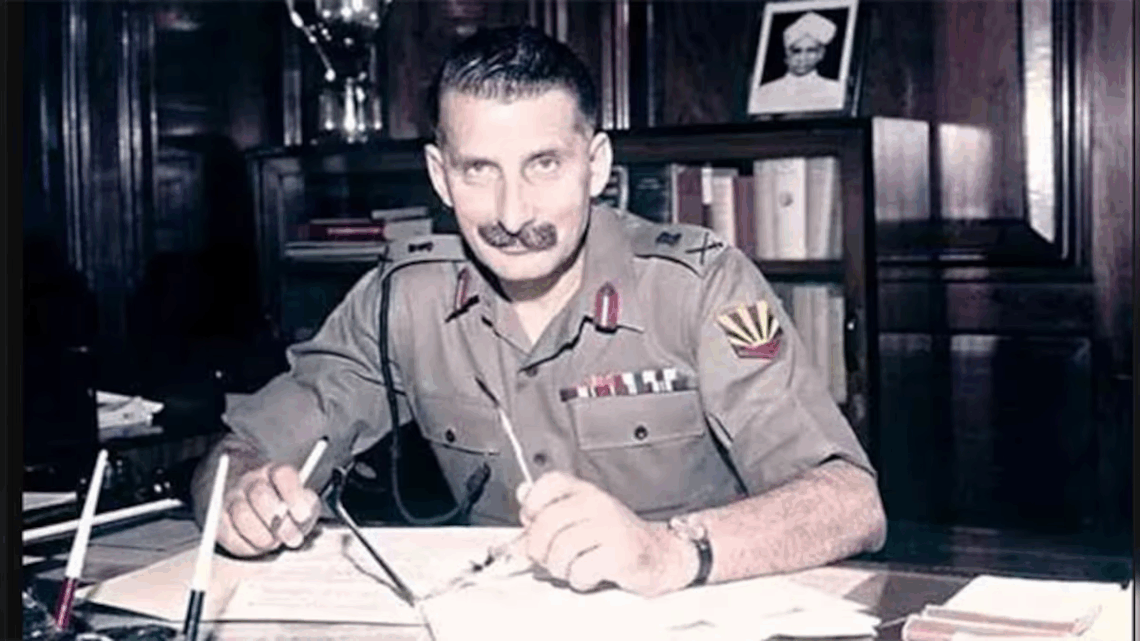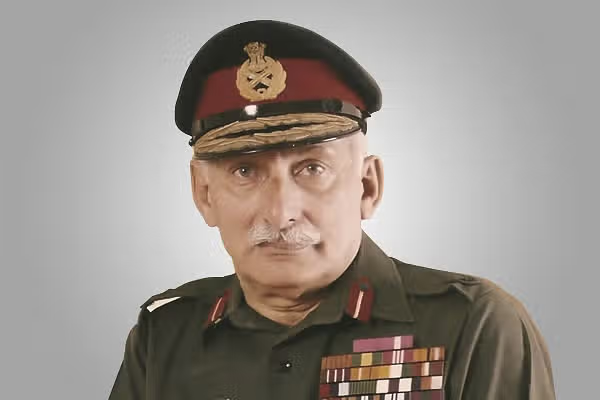
Sam Manekshaw Biography: Siblings, Parents, Height, Death, Ethnicity, Wife, Age, Net Worth, Nationality, Children
Field Marshal Sam Hormusji Framji Jamshedji Manekshaw, widely known as Sam Bahadur, was a distinguished officer in the Indian Army and a key figure in India’s military history.
In 1973, he became the first Indian appointed as a Field Marshal. Manekshaw’s exemplary leadership was instrumental in India’s triumph during the 1971 Indo-Pakistani War, ultimately leading to Bangladesh’s creation.
Trending Now!!:
He served as the Chief of the Army Staff from 1969 to 1973, earning high recognition for his strategic acumen and dedication to the nation.
He was honored with prestigious awards throughout his career, including the Padma Bhushan in 1968 and the Padma Vibhushan in 1972.
Manekshaw is remembered for his extraordinary leadership, tactical brilliance, and unwavering commitment to his soldiers and country.
Profile
- Full name: Sam Hormusji Framji Jamshedji Manekshaw
- Stage Name: Sam Manekshaw
- Born: April 3 1914
- Died: June 27 2008
- Age: 94 years old
- Birthplace: Amritsar, India
- Nationality: Indian
- Occupation: Indian Army
- Height: 1.78m
- Parent: Hormusji Manekshaw ,Hilla née Mehta
- Siblings: Jemi Hormusji Framji Manekshaw
- Spouse: Siloo Manekshaw (m. 1939–2001)
- Children: Sherry Batliwala, Maja Daruwala
- Relationship: Divorced
- Net Worth: $1 to 5 million
Early Life And Education
Sam Hormusji Framji Jamshedji Manekshaw was born on April 3, 1914, in Amritsar, Punjab, British India. He was the fifth of six children born to Hormusji Manekshaw, a doctor, and Hilla née Mehta.
His brother, Jemi Hormusji Framji Manekshaw, served in the Indian Air Force and rose to the rank of Air Vice Marshal.
Manekshaw received his early education at Sherwood College in Nainital and Hindu Sabha College in Amritsar before enrolling at the Indian Military Academy in Dehradun in 1932.
Of Persian descent, he was a follower of the Zoroastrian faith.

Career
Field Marshal Sam Hormusji Framji Jamshedji Manekshaw’s early education occurred at Sherwood College in Nainital and Hindu Sabha College in Amritsar. In 1932, he joined the inaugural batch of cadets at the Indian Military Academy in Dehradun, which marked the commencement of his illustrious military career.
Upon completing his training, Manekshaw was commissioned into the British Indian Army on February 1, 1935.
He was initially attached to the 2nd Battalion of the Royal Scots and later posted to the 4th Battalion of the 12th Frontier Force Regiment, the 54th Sikhs.
His early military experiences, particularly during World War II, set the stage for his future as a distinguished military leader.
Manekshaw demonstrated exceptional courage and leadership during World War II, especially during the Burma campaign in 1942, where he earned the Military Cross for gallantry.
His valor was particularly evident in the Battle of Sittang Bridge, where, despite sustaining severe injuries, he led his company to victory.
Following the Partition of India in 1947, his unit became part of the Pakistan Army. Despite a personal invitation from Muhammad Ali Jinnah to join the Pakistani Army, Manekshaw chose to remain with India.
He was crucial in the Kashmir conflict 1947, briefing key leaders like Lord Mountbatten and Prime Minister Nehru.
Over the years, he rose through the ranks, becoming a colonel, brigadier, and later the commander of the 167 Infantry Brigade in 1952.
In 1962, Manekshaw faced a politically motivated treason trial, which temporarily prevented his involvement in the Sino-Indian War.
However, he was soon cleared of all charges and continued his ascent within the Indian Army. By 1963, he became the army commander for Western Command, and in 1964, he took over Eastern Command.
His leadership during the Nathu La and Cho La clashes in 1967, where India achieved a significant victory against Chinese forces, earned him widespread recognition.
In 1968, he was awarded the Padma Bhushan for combating insurgencies in Nagaland and Mizoram, solidifying his reputation as a capable and strategic military leader.
Manekshaw’s tenure as the Chief of Army Staff from 1969 to 1973 was defined by his pivotal leadership during the 1971 Indo-Pakistani War.
Under his command, Indian forces supported the Mukti Bahini, contributing significantly to the creation of Bangladesh. The war culminated in the surrender of over 93,000 Pakistani soldiers, one of the largest surrenders in military history.
Manekshaw was awarded the Padma Vibhushan in 1972 for his outstanding service. His exceptional leadership was further acknowledged when he became the first Indian to be promoted to Field Marshal on January 1, 1973.
Manekshaw retired on January 15, 1973, a date that is now celebrated as Army Day, leaving behind a lasting legacy of courage, leadership, and military brilliance.
Social Media
Sam Manekshaw does not have any social media accounts.
Personal Life
Sam Manekshaw married Silloo Bode on April 22, 1939, in Bombay after meeting her at a dinner party in Lahore, where she was visiting her sister and brother-in-law, a doctor in the British Indian Army.
The couple had two daughters, Sherry Batliwala and Maja Daruwala. Manekshaw passed away on June 27, 2008, at the age of 94, due to complications from pneumonia at the Military Hospital in Wellington, Tamil Nadu, marking the end of a remarkable life dedicated to service and leadership.

Net Worth
Sam Manekshaw’s estimated lifetime net worth is between ₹1.5 to 2 crores (approximately $1 to 5 million USD).
His primary source of income during his career was his salary as a Field Marshal in the Indian Army.
Following his retirement, his income included an annual pension of ₹2 to 3 lakhs and royalties from books and articles, which amounted to ₹25,000 to 30,000 per year.
NOTICE!! NOTICE!! NOTICE!!
DISCLAIMER!! : Every Biography and Content Published On TheCityCeleb are For Knowledge Reason. Don't Hesitate to Reach Out for Any Correction || Suggestion || Copyright!!CORRECT@thecityceleb.com

